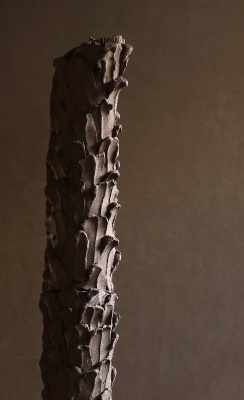Descripción de la Exposición
Beatriz Milhazes is about to hold her first solo show in 11 years in Rio de Janeiro. On August 29, Paço Imperial, a historical building located in downtown Rio, will host the most extensive overview to date of the artist's production, featuring more than 60 artworks including paintings, collages and prints, as well as a large mobile conceived especially for the space. Curated by French critic Frédéric Paul, sponsored by Banco Itaú and the energy company Statoil, and produced by Base 7 Projetos Culturais, the exhibition Meu Bem will present some of the artist's most striking works since the late 1980s, coming from various public and private collections in Brazil and abroad. The various events planned for 2014 include the release of the catalog raisonné of her oeuvre in a deluxe edition published by Taschen, a documentary on her career, directed by José Henrique Fonseca, as well as her first traveling show in North America, to be held in a series of museums starting at Pérez Art Museum Miami (PAMM).
Beatriz Milhazes's most recent institutional exhibitions in Brazil took place in 2002 (CCBB-RJ) and 2008 (Pinacoteca do Estado ? SP). Although the artist has continued to show her recent production in sporadic exhibitions at her gallery in São Paulo, interspersing them with a busy international agenda, Meu Bem (My Dear) is a unique opportunity to take another look at historical works, to learn about the most recent developments of her production, and to identify some common threads, procedures and compositional strategies running through this vast set, which have made it one of the highlights of contemporary art worldwide at this threshold of the 21st century. She has participated in various biennials, such as those of Venice and São Paulo, and has held 30 solo shows in 11 countries, most notably at Fundação Calouste Gulbenkian (Lisbon) and Fondation Cartier (Paris), while also participating in dozens of group shows, including The Encounters in the 21st Century: Polyphony ? Emerging Resonances, at the 21st Century Museum of Contemporary Art (Kanazawa, Japan).
The most evident aspects of her work are its intense relation with Brazilian popular art, the dialogue with segments of applied art, including handicraft and embroidery, as well as a fertile proximity with three important moments in the history of Brazilian art: the baroque, antropofagia, and tropicalism. Other key features of Beatriz Milhazes's work are the organicity of the forms and the intense chromatic interplay, which establish a relation of complementarity and contrast with an increasingly rigorous compositional structure. 'She asserts strong links with European modernity and is on equal footing in the contemporary scene, in which she abolishes the often less than wise codes of abstraction,' explains Frédéric Paul.
It may seem strange to attribute the term 'geometric abstraction' to such a sensual painting. But as the artist herself explains, the elements of this more rigorous and formal universe are also part of her repertoire, along with those drawn from fields like popular art and design. Moreover, 'in the solitude of the studio, what functions is shape, color, structure, composition: questions clearly linked to abstract painting and geometry. The flower functions as color and as shape,' she adds.

Exposición. 17 abr de 2025 - 03 sep de 2025 / Centro Cultural Andratx (CCA) / Andratx, Baleares, España

Formación. 08 may de 2025 - 17 may de 2025 / Museo Nacional Centro de Arte Reina Sofía (MNCARS) / Madrid, España